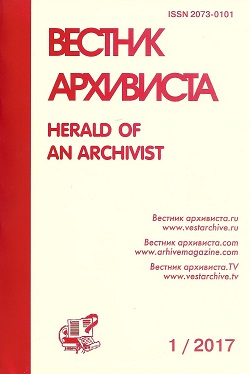УДК 929 + 94(515)
DOI 10.28995/2073-0101-2019-2-595-609
Irina R. Garri
Institute for Mongolian, Buddhist, and Tibetan Studies of the Russian Academy of Sciences, Ulan-Ude, Russian Federation
Autobiography of Arjia Rinpoche as a Source on the Tibetan History
Abstract
The article analyzes the life and activities of Arjia Rinpoche, director of the Tibetan-Mongolian Cultural Center in Bloomington, in the context of the contemporary history of China and its ethnic minorities. Arjia Rinpoche is the former abbot of an influential Buddhist monastery Kumbum in Eastern Tibet and the incarnation of Tsongkhapa's father, its founder. In addition to his high religious position, he held important posts in the system of Chinese state power. However these regalia notwithstanding, in 1998 Arjia-Rinpoche fled the country with great risk to his life and became a powerless refugee. In 2010 Arjia-Rinpoche’s autobiography was published in the United States in English. In 2013 its extended and revised edition (571 p.) was published in Chinese. The author of this article has translated the book in the Russian and it awaits publication in the “Buryad-Mongol Nome” publishing house. The article analyzes Arjia Rinpoche’s autobiography as an important source on ethnography and history of the Tibetans and Mongols of the PRC and their relationship with the Chinese state. The life and activities of Arjia Rinpoche are studied in the context of contemporary history of the PRC. Arjia Rinpoche himself has divided his life into eight-year cycles. Each loosely corresponds to a certain stage in the history of the PRC. There are six cycles since Arjia Rinpoche’s birth in 1950 to his escape from the PRC in 1998. At the age of two he was recognized as reincarnation of Arjia Rinpoche, abbot of the Kumbum monastery. At the age of eight, religious reform in the monastery cardinally changed his life and he went through vicissitudes of political campaigns and the Cultural Revolution in the two successive cycles. With the beginning of the socio-political and economic reforms initiated after the death of Mao Zedong in 1978, he became the head of Kumbum and grew involved in politics. In 1995, in the last period of his life in the PRC, there was a big conflict between the PRC government and the Dalai Lama over recognition of the 11th incarnation of the Panchen Lama. In order to legitimize their chosen candidate, the authorities suggested that Arjia-Rinpoche become his religious teacher. In reaction to that, the lama made his secret escape from the country. The author concludes that Arjia Rinpoche is one of the most important religious and political figures in Tibet, and his autobiography is one of the most valuable and reliable sources on ethnography and history of Tibet and China in general.
Keywords
Arjia Rinpoche, Kumbum, China, Tibet, Sino-Tibetan relations
Download the article: garri_doi
References
GARRI, I. R. Amdo v kontexte vsaimodeistviya etnicheskih kultur Vnutrennei Azii [Amdo in the context of interrelations of the Inner Asian cultures. In Russ.]. IN: Vestnik RGNF, 2016, no 2 (83), pp. 11-25.
GARRI, I. R. Buddizm i politika v Tibetskom raione KNR [Buddhism and Politics in the PRC. In Russ.]. Ulan-Ude, 2009, 319 p.
GARRI, I. R. Mongolskoe plemya, sateryavsheesya v Vostochnom Tibete [Mongolian tribe lost in the Eastern Tibet. In Russ.]. IN: ARD, October 25, 2017 [on-line]. Available at: http://asiarussia.ru/blogs/18104/
Tibet. Pravda, osnovannaya na faktah [Tibet. Proving truth from facts In Russ.]. Department of Information and International Relations. Central Tibetan Administration of H. H. The Dalai Lama. Dharamsala, 1993.
USOV, V. N. Istoriya KNR [History of the PRC. In Russ.]. In 2 vols. Vol 1. Moscow, AST, Vostok-Zapad publ., 2006, 812 p.
ARJIA Rinpoche. Tsagyin belgedegch naran cholo [Sun lights as harbingers of the dawn. In Mong]. Ulaabaatar, 2010, 326 p.
AJA-ROSAN-TUPUTEN (Aja-rinpoche hassei). Aja-Rinpoche Kaisoroku. Mongoru-jin chibetto bukkyo: shido:sha-ni yoru chu:goku shihaika yonjuhachi nen-no kiroku [Memoirs of the Arjia Rinpoche. Mongol-Tibetan Buddhist monk about 48 years under the Chinese rule. In Jap.] Shu:ko:sha, 2018, 500 p.
AJIA Renpoche. Dunfeng shunshui: Ajia Renpochede yisheng he jinping cheqiande mimi [Life of the Arjia Rinpoche and the secret of the golden urn's lot. In Chin.] Taibei, Dakuai wenhua chuban gufen youxian gongsi, 2013, 571 p.
An overview of Sino-Tibetan dialog. The Official Website of the Central Tibetan Administration [on-line]. Available at: http://www.tibet.net.
ARJIA Rinpoche. Surviving the dragon: A Tibetan lama's account of 40 years under Chinese Rule / foreword by His Holiness the Dalai Lama. Rodale, 2010, 262 p.
FRENCH P. Tibet. A Personal History of a Lost Land. London, Harper-Collins, 2003.
SHAKYA, Ts. The Dragon in the Land of Snows. Columbia University Press, 1999; GOLDSTEIN, M. A History of Modern Tibet. Vol. 2: The Calm before the Storm: 1951-1955. Berkeley and Los Angeles, University of California Press, 2007, 674 p.
Nazis of Asia Set Out to Hoodwink the Free World. [On-line]. Available at: www.ibiblio.org/obl/reg.burma/archives/1999710/msg00147.html
SAUTMAN, B. “Demographic Annihilation” and Tibet. IN: SAUTMAN, B., DREYER, J. T. [eds.]. Contemporary Tibet. Politics, Development and Society in a Disputed Area. New York, M. E. Sharpe, Inc., 2006, pp. 230-257.
SHAKYA, Ts. The Dragon in the Land of Snows. Columbia University Press, 1999.
Tibetan Groups in India Protest Lhasa Arrests. United Press International (UPI), May 23, 1993.
About author
Garri Irina Regbievna, PhD in History, associate professor, Institute for Mongolian, Buddhist, and Tibetan Studies of the Russian Academy of Sciences, Ulan-Ude, Russian Federation, +7-950-397-86-92, This e-mail address is being protected from spambots. You need JavaScript enabled to view it
Grant information
The research has been conducted upon state order and supported within the frameworks of project XII.191.1.3. “Comprehensive study of religious and philosophical, historical and cultural, social and political aspects of Buddhism in traditional and contemporary circumstances in Russia, Central Asia and Far Easr” (no. АААА-А17-117021310263-7).
Submitted 19.11.2018, published (for citation):
GARRI, I. R. Avtobiografiya Ardzha-rinpoche kak istochnik po sovremennoi istorii Tibeta [Autobiography of Arjia Rinpoche as a Source on the Tibetan History. In Russ.]. IN: Vestnik arhivista / Herald of an Archivist, 2019, no. 2, pp. 595-609. doi 10.28995/2073-0101-2019-2-595-609














